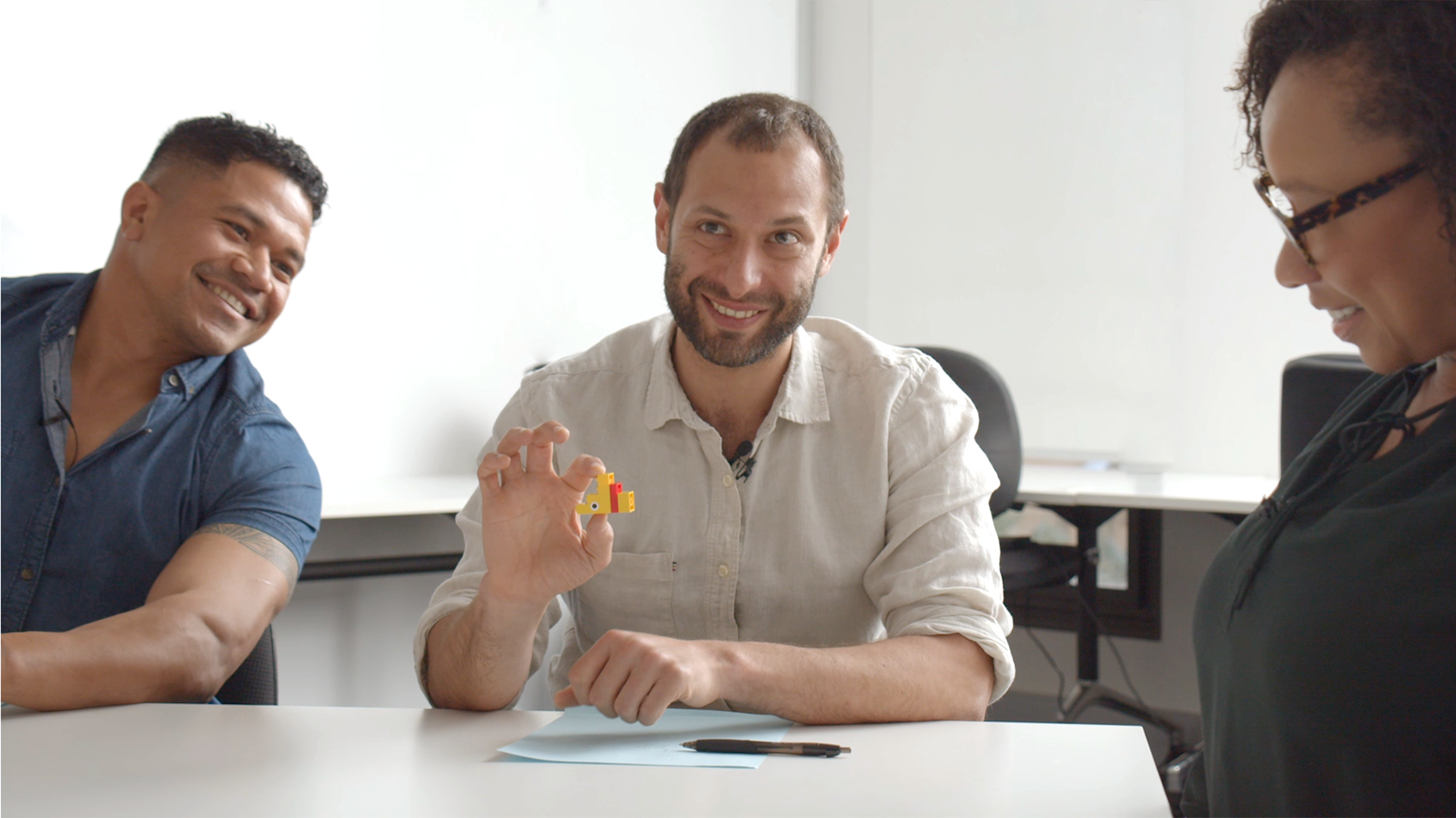Building Better Solutions: Why Training is Key to using the LEGO® Serious Play® Method Successfully

The LEGO® Serious Play® method is a unique approach to problem-solving and idea generation that uses LEGO® bricks as the primary tool.
This methodology has been gaining popularity in recent years, and for good reason. The LEGO® Serious Play® method is an effective way to engage participants in brainstorming, decision-making, and strategic planning.
However, using the LEGO® Serious Play® method requires proper training to ensure that workshops and facilitated sessions are successful.
Here’s why:

#1: Ensure your workshop is properly planned
Without proper planning, the session can quickly become disorganized and chaotic – and that means that results are ineffective.
Trained facilitators know how to plan a session that is structured in a logical flow, so that participants know what is happening and don’t feel out of the loop.
- A properly planned LEGO® Serious Play® session starts with an activity that gets participants comfortable and engaged. This can be a simple task, such as building a tower with LEGO® bricks.
- The facilitator then moves the session forward from literal interpretations of models into metaphorical interpretations.
- A session that is well planned doesn’t throw anyone into the deep-end. It gives them the time to move through the process and begin to tell really rich and detailed stories.

#2: Manage group dynamics
- An essential component of the LEGO® Serious Play® process is that 100% of the people are engaged all of the time. This takes skill on behalf of the facilitator.
- They need to provide clear instructions and guidelines for building, as well as encourage participants to share their ideas and insights with the group.
- Trained facilitators will know how to do this effectively, without taking over the conversation or limiting the creativity of the group.
- Training in the LEGO® Serious Play® method can also help facilitators to adapt to unexpected challenges that may arise during the session. For example, a participant may have difficulty expressing their ideas through building, or a group may struggle to reach a consensus on a particular issue.

#3: Achieve an outcome
Another reason why training is important when using the LEGO® Serious Play® method is to ensure that the session is focused on achieving specific goals or outcomes.
- A skilled facilitator will work with the organizers to identify the key objectives of the session and design challenge questions that help achieve those objectives. This could include exploring new product ideas, improving communication between team members, or developing a strategic plan for the organization.
- No one wants to leave a session that had no outcome as it doesn’t feel productive or a worthwhile use of time. A trained facilitator works with a roadmap to ensure that outcomes are achieved.

#4: Keep participants in flow
If the session is too difficult or too easy, participants will go out of ‘flow’. They might become bored or lose interest or they might become too stressed.
- The facilitator’s role is to manage the way in which the session is structured to ensure that everyone remains engaged as they build their 3D models as metaphors.
- They also have the role of creating a safe space for everyone in the room. This encourages all participants to speak their truth and to tell stories that are meaningful and authentic.
Here’s an example of the method in action
To illustrate the importance of training in the LEGO® Serious Play® method, consider the following example:
A marketing team at a large corporation is struggling to come up with new product ideas. They decide to use the LEGO® Serious Play® method to facilitate a brainstorming session.
Without proper training, the session quickly becomes disorganized and unfocused. Participants are building random models with no clear direction, and the discussion jumps from topic to topic without making any progress. The facilitator is unsure how to manage the group dynamics, and some
Some participants feel left out of the conversation. As a result, the session ends with no concrete ideas or plans for moving forward.
Now, imagine the same scenario, but with a trained facilitator leading the session.
The facilitator has carefully planned the session, with clear objectives and a logical flow of challenge questions. They structure the session so that all participants are comfortable and engaged, and then guide them through a series of building activities that help them explore and express their ideas.
Throughout the session, the facilitator manages the group dynamics, ensuring that everyone has a chance to participate and that the conversation stays focused on the objectives of the session.
They adapt the activities to address any challenges that arise, and use their knowledge and experience to encourage creative thinking and collaboration – and gain key insights.
As a result of this well-planned and expertly facilitated session, the marketing team comes away with a number of concrete ideas for new products, as well as a better understanding of how to work together more effectively.
They feel energized and motivated and are eager to put their new ideas into action.
The LEGO® Serious Play® experiential process can be an incredibly powerful tool for creating meaningful, lasting change.
It encourages participants to explore their ideas and express themselves in a safe and supportive environment, while gaining a better understanding of how to work together more effectively.
And with proper training, facilitators can ensure that the session is well-structured, focused, and tailored to the needs of the group – and there is a real impact on business performance.
Options for training as a facilitator of the LEGO® Serious Play® method to suit all budgets:
A further article for you on why using the LEGO® Serious Play® method as a trained facilitator is a valuable addition to your toolkit: